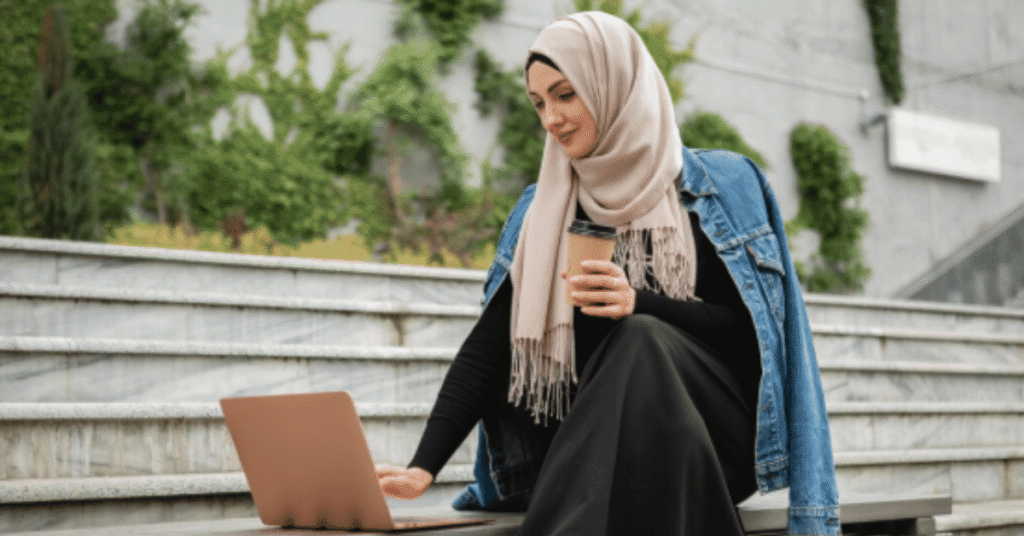The abaya, once a simple symbol of modesty, has evolved into a global fashion statement representing cultural heritage, identity, and sophistication. Originating from the Arabian Peninsula, it served as a loose, flowing garment worn by women for both protection and decorum. Today, the abaya stands at the intersection of tradition and modern design, blending regional values with international trends. Whether made of lightweight silk, crepe, or chiffon, the abaya reflects a timeless aesthetic rooted in faith and culture while adapting to contemporary lifestyles. For many, it is more than just a garment—it is a reflection of dignity, self-expression, and social identity. In this article, we explore the history, evolution, craftsmanship, and global influence of the abaya, unraveling how a modest cloak became a universal symbol of grace and empowerment.
The Origins and Cultural Significance of the Abaya
The abaya’s origins date back centuries, to a time when garments were defined by climate, faith, and practicality. In ancient Arabia, the loose-fitting cloak was worn to protect women from the desert sun while maintaining modesty—a key aspect of cultural and religious values. The word “abaya” is derived from Arabic roots meaning “cloak” or “covering.” It symbolized both respect and privacy, aligning with Islamic principles of modest dress. Over time, it became a mark of cultural identity, particularly among women in the Gulf region. What started as a traditional attire specific to the Arabian Peninsula gradually found resonance in regions like North Africa and Southeast Asia. Even in its earliest form, the abaya represented an intricate dialogue between tradition, climate, and faith.
Evolution of the Abaya: From Classic to Contemporary
As global fashion advanced, the abaya transformed from a plain black cloak into a canvas for artistic innovation. Modern designers began integrating embroidery, lace, sequins, and delicate stitching, turning the abaya into a symbol of elegance. By the 1980s and 1990s, luxury abayas started appearing in urban centers such as Dubai, Jeddah, and Doha. Today, the abaya industry is worth billions, and designers like Huda Al Nuaimi and Hanayen have redefined it through minimalist silhouettes and refined tailoring. The use of new fabrics, including organza and linen blends, has further diversified the garment’s appeal. The modern abaya is versatile—it can be worn in professional settings, at formal events, or as casual outerwear. “Fashion evolves, but modesty endures,” says Emirati designer Layla Al Fardan, emphasizing how abayas now balance elegance with cultural authenticity.
Materials and Craftsmanship Behind the Abaya
Crafting an abaya requires precision, artistry, and cultural understanding. The choice of fabric determines not only comfort but also the garment’s flow and character. Traditionally, wool and cotton were used, but modern abayas often feature high-end materials like Japanese crepe, chiffon, and satin. Artisans focus on subtle details—hand-stitched hems, hidden zippers, or pearl embellishments. In the Gulf, abaya making remains an intergenerational craft where tailors pass down sewing secrets. The artistry is also technological: some designers now use 3D embroidery and digital cutting tools to achieve perfection. Color has expanded beyond black—shades like navy, beige, and emerald green are becoming fashionable. Every stitch, fold, and layer reflects a delicate balance of comfort and sophistication, ensuring that the abaya remains both traditional and modern in essence.
Table 1: Evolution of Abaya Styles Over Time
| Era | Key Characteristics | Notable Features | Fabric Used |
|---|---|---|---|
| Pre-20th Century | Traditional cloak, plain design | Full coverage, hand-stitched | Wool, cotton |
| 1950s–1970s | Regional variations emerge | Embroidery begins | Crepe, silk |
| 1980s–1990s | Luxury abayas introduced | Lace, beads, brand influence | Chiffon, satin |
| 2000s–2010s | Designer abayas gain popularity | Tailored fits, color accents | Japanese crepe |
| 2020s–Present | Fusion of modern and traditional | Minimalist, eco-friendly materials | Linen, organza, sustainable blends |
Abaya as a Cultural Statement
An abaya is more than attire—it’s a cultural statement deeply tied to a woman’s sense of belonging. Across the Gulf, wearing an abaya can signify pride in heritage, faith, and social values. However, it also represents modernity; women now view it as an avenue for personal style. The transformation of abayas in fashion shows, art exhibitions, and media campaigns illustrates this duality. For instance, Saudi Arabia’s “Modest Fashion Week” celebrates abayas as wearable art. “The abaya is not about restriction—it’s about identity,” noted fashion scholar Reema Al Otaibi. Beyond its religious roots, it has become a bridge between tradition and global fashion narratives, making modest wear not only accepted but admired.
The Global Reach of Abaya Fashion
While traditionally associated with Middle Eastern culture, the abaya’s appeal has transcended borders. Western fashion houses have adopted abaya-inspired silhouettes into their modest wear collections. Designers like Dolce & Gabbana and DKNY have launched modest lines influenced by abaya aesthetics. Social media has further propelled this trend; influencers from London to Kuala Lumpur are redefining modest fashion. Global markets such as Turkey, Indonesia, and even the United States now see rising demand for abaya-inspired outerwear. The garment’s cross-cultural appeal lies in its versatility—it offers comfort, elegance, and inclusivity. Whether styled with heels, scarves, or sneakers, the abaya adapts effortlessly to diverse wardrobes, making it both timeless and borderless.
Table 2: Leading Countries in Abaya Fashion Production and Trends
| Country | Market Characteristics | Emerging Trends | Popular Designers |
|---|---|---|---|
| UAE | Luxury-focused, innovation-driven | Smart abayas, AI design | Huda Al Nuaimi |
| Saudi Arabia | Cultural and heritage focus | Traditional-modern fusion | Abadia, Dar Al Hazar |
| Indonesia | Youth-driven, colorful styles | Modest streetwear | Ria Miranda |
| Turkey | European fusion aesthetics | Embroidered urban designs | Tugba & Venn |
| France | Modern modesty, couture abayas | Silk-linen combinations | Inayah Paris |
The Psychology of Wearing an Abaya
Beyond its external appearance, wearing an abaya carries psychological and emotional dimensions. Many women report a sense of empowerment and peace while wearing it. The abaya allows for a focus on inner character rather than outward appearance, fostering self-respect and confidence. Psychologists suggest that garments like abayas strengthen cultural identity and community belonging. The act of choosing how to style it—belted, open-front, or kimono-style—also introduces individuality within modesty. This balance of privacy and personal expression has made abayas appealing to a global audience seeking elegance with purpose. As one modest fashion advocate noted, “The abaya gives women the power to define their own version of beauty.”
Sustainability and Innovation in Abaya Production
Sustainability has entered the abaya industry, reshaping how these garments are made and marketed. Eco-conscious designers are experimenting with organic fabrics, plant-based dyes, and zero-waste patterns. In regions like Dubai and Doha, workshops promote upcycled materials and ethical labor practices. Technology plays a vital role too; 3D modeling reduces fabric waste, while blockchain systems track material origins for transparency. Consumers now favor brands that merge ethics with aesthetics. This shift towards responsible fashion reflects global awareness about environmental impact. The sustainable abaya is not only a design trend but a moral evolution of tradition, showing that modest fashion can lead the movement toward conscious clothing.
Modern Interpretations in Global Fashion
Modern abayas blur the line between traditional and contemporary wear. Designers are introducing front-open styles paired with jeans, belts, or sneakers, catering to younger audiences. Global celebrities have also embraced abaya-inspired attire on red carpets, increasing its visibility. In Europe, the minimalist black abaya has inspired trench coats and kimono wraps. Meanwhile, cultural festivals celebrate abayas as artistic expressions rather than mere garments. The rise of digital fashion has brought virtual abayas to the metaverse, allowing designers to test futuristic silhouettes. These interpretations affirm that the abaya’s story continues to evolve—a living garment adapting with time, creativity, and cultural exchange.
Economic Impact and Market Expansion
The abaya industry today contributes significantly to regional economies. The Gulf Cooperation Council (GCC) nations host thousands of boutiques specializing in bespoke abayas. Annual modest fashion events generate millions in tourism and media exposure. E-commerce has expanded the market globally, with digital platforms allowing women from Europe, Africa, and Asia to access customized designs. Analysts predict that the global modest fashion market will exceed $100 billion within the decade, with abayas accounting for a major share. Small-scale artisans and luxury designers alike benefit from this growth, as abayas now represent a thriving fusion of commerce, creativity, and culture.
The Role of Media and Pop Culture
Media representation has played a critical role in reshaping global perceptions of abayas. Through films, television, and digital platforms, the abaya is being reframed as both modest and stylish. Documentaries on Middle Eastern fashion showcase how the garment bridges faith and feminism. Social media influencers have redefined abaya styling by incorporating global trends while maintaining modesty. The dialogue around abayas now includes discussions about identity, empowerment, and self-expression. “Clothing can be a form of quiet revolution,” says cultural critic Amina Hassan. By featuring abayas on global runways and in international magazines, the media has made it a central piece of the global modest fashion movement.
Symbolism and Spiritual Depth
Spiritually, the abaya holds deep meaning. It signifies humility and a conscious choice to prioritize inner values. For many women, wearing an abaya during prayer or pilgrimage symbolizes devotion and respect. Its simplicity serves as a reminder of equality and dignity, removing social hierarchies based on appearance. Across different Islamic schools of thought, the abaya carries varying interpretations, but its essence remains consistent—an outward reflection of inward faith. This connection between attire and spirituality has preserved the abaya’s relevance for generations, ensuring that it remains not merely a fashion statement but a vessel of moral and emotional depth.
The Future of the Abaya
The abaya’s future lies at the intersection of innovation and heritage. As digital design tools, AI-based tailoring, and smart textiles advance, the next generation of abayas may include temperature-regulating fabrics or sustainable nanomaterials. Yet, the essence of modesty will remain untouched. The garment continues to evolve while maintaining its cultural roots—a phenomenon few clothing traditions achieve. Future trends may also highlight inclusivity, offering designs for all body types and cultural backgrounds. The abaya’s enduring strength lies in its adaptability and symbolism—a garment that tells stories of faith, identity, and artistic evolution. As one designer aptly puts it, “The abaya isn’t just worn; it’s lived.”
Conclusion
The abaya has journeyed from the deserts of Arabia to the fashion capitals of the world, blending tradition with innovation. It represents the resilience of cultural identity amid globalization. More than a piece of cloth, it stands as a symbol of dignity, artistry, and evolving femininity. Its transformation—from a practical cloak to a contemporary fashion icon—reflects how cultures grow without losing their essence. Today’s abaya embodies empowerment, sustainability, and elegance, showing that modesty can coexist with creativity. The story of the abaya is far from over; it continues to inspire designers, empower women, and unite generations under the shared fabric of heritage and grace.
FAQs
1. What is the purpose of wearing an abaya?
The abaya serves both cultural and religious purposes, symbolizing modesty, protection, and respect. It allows women to express their identity while adhering to faith-based values. Modern abayas also function as elegant fashion statements adaptable to different occasions.
2. Are abayas only black in color?
No, while traditional abayas were black, modern designs come in various colors such as beige, grey, navy, and pastel shades. Designers now incorporate creative textures and embroidery, making color an integral part of abaya aesthetics.
3. How has the abaya evolved in modern fashion?
The abaya has evolved from a traditional cloak into a fashionable and versatile garment. Contemporary designs feature lightweight fabrics, open-front styles, and intricate embellishments, catering to both modesty and modern elegance.
4. What materials are commonly used in abayas today?
Modern abayas are crafted from materials such as Japanese crepe, chiffon, satin, organza, and linen. Designers select fabrics based on climate, comfort, and drape to create garments that are stylish yet practical.
5. Is the abaya gaining popularity outside the Middle East?
Yes, abayas are gaining global recognition as symbols of modest fashion. They are increasingly popular in Europe, Southeast Asia, and North America, reflecting growing appreciation for culturally inspired clothing and inclusive fashion trends.







